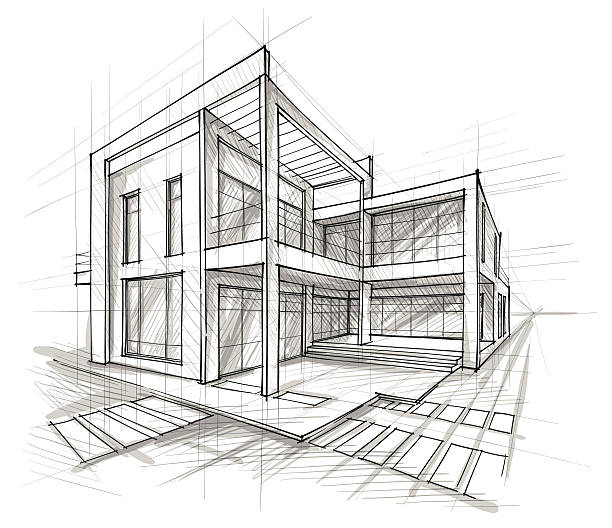The Creative Process Behind Effective Projects from CDA Architects
The Creative Process Behind Effective Projects from CDA Architects
Blog Article
Comprehending the Collaborative Refine In Between Designers and Designers in Modern Construction Projects
The joint procedure between architects and engineers is essential in contemporary building and construction projects, as it harmonizes style intent with design feasibility. Checking out these characteristics reveals insights that might dramatically impact project end results and total industry standards.
The Importance of Collaboration
The collaborative synergy in between designers and designers is necessary for the effective realization of any type of building job. This collaboration brings with each other distinct experience and perspectives, allowing the assimilation of innovative layout with practical engineering options. By interacting, designers and designers can make sure that a task not just meets aesthetic and useful demands yet additionally abides by safety, sustainability, and monetary restraints.
Cooperation promotes a shared vision, assisting in the positioning of objectives and assumptions from the outset. This alignment is essential in attending to potential obstacles and mitigating threats that can develop throughout the project lifecycle. A collective method allows for the effective allowance of sources, enhancing both time and expense.
The significance of cooperation extends to the repetitive process of design and construction, where comments from designers can notify building choices, causing more feasible and lasting styles. Alternatively, engineers can inspire designers to believe creatively concerning exactly how to accomplish structural honesty without endangering creative intent. Ultimately, the collective relationship in between engineers and engineers is not simply helpful; it is fundamental to the development of high-grade, functional, and innovative constructed environments that fulfill the needs of society.
Interaction Strategies and Tools
Effective interaction techniques and devices are vital for fostering cooperation between designers and designers throughout the project lifecycle. Developing clear networks of communication is vital to make certain that all group members are lined up with project purposes, timelines, and obligations. Regular meetings, both in-person and online, give possibilities for stakeholders to go over development, address issues, and make informed choices.
Making use of job administration software program, such as BIM (Structure Details Modeling) systems, boosts partnership by enabling real-time sharing of layout alterations and technological specs. These devices facilitate transparency, enabling engineers and designers to envision changes and assess their influence on the general task.

Shared Goals and Task Vision

Developing common objectives involves open dialogue and a thorough understanding of each technique's payments. Architects commonly concentrate on design intent, spatial partnerships, and customer experience, while engineers stress architectural stability, systems functionality, and compliance with guidelines (cda architects). When these point of views are aligned, the outcome is a cohesive job that follows both innovative goals and technological feasibility
Moreover, a distinct project vision fosters liability amongst employee, encouraging each individual to take possession of their duty in achieving the wanted result. Regular check-ins and joint workshops can further strengthen this dedication, permitting adjustments to be made as the task progresses. Ultimately, a shared vision not just enhances team effort but likewise boosts company website the high quality of the final deliverable, bring about successful job completion.
The Duty of Innovation
Leveraging innovation has actually come to be essential in enhancing collaboration between architects and designers. Structure Details Modeling (BIM) stands out as a crucial modern technology, permitting both engineers and designers to produce in-depth 3D designs that encapsulate design intent and architectural honesty.
In addition, cloud-based systems allow seamless collaboration, permitting job stakeholders to gain access to and update project information from anywhere. This cultivates a culture of transparency and liability, as adjustments can be tracked and examined in real-time. Furthermore, mobile applications further boost interaction, offering on-site teams with prompt access to project requirements and updates.
Emerging innovations such as expert system and artificial intelligence are also beginning to contribute in predictive analysis, aiding teams determine possible issues before they develop. Inevitably, the role of innovation in architecture-engineering collaboration not only enhances process effectiveness yet also enhances advancement, causing even more effective task outcomes. this contact form By embracing these technological improvements, engineers and engineers can ensure a more cohesive and productive collaborative procedure throughout the construction lifecycle.
Study in Effective Partnerships
Many study show the extensive effect of reliable partnerships in between designers and engineers on job results. One significant instance is the cooperation on the High Line in New York City City, where landscape engineers, designers, and urban planners interacted to change an abandoned rail line right into a dynamic public park. This multidisciplinary technique not only improved the visual quality but additionally ensured structural security and ecological sustainability.
An additional exemplary instance is the design and building and construction of the Sydney Music Hall. The partnership in between designer JÃ ¸ rn Utzon and architectural designer Ove Arup exhibited cutting-edge problem-solving. Their collaboration permitted the legendary shell-like style while addressing complex design difficulties, ultimately resulting in an ageless building work of art.
The Burj Khalifa in Dubai even more demonstrates the importance of collective initiatives. cda architects. The combination of style and design knowledge enabled the job team to attain unprecedented elevations while adhering to security policies and aesthetic vision
These examples highlight the relevance of communication, trust, and shared goals. In today's intricate construction atmosphere, such collaborations are vital to navigating difficulties and supplying jobs that meet both useful why not try these out and visionary objectives.
Verdict
Finally, the collaboration between architects and engineers is essential for the success of contemporary construction tasks. Effective interaction strategies, a common project vision, and the combination of sophisticated innovations are important components that facilitate this partnership. By fostering a society of responsibility and leveraging devices such as Building Information Modeling (BIM), teams can browse job complexities, making certain that aesthetic, practical, and sustainability objectives are achieved. Inevitably, this harmony brings about ingenious and effective task results.
Report this page